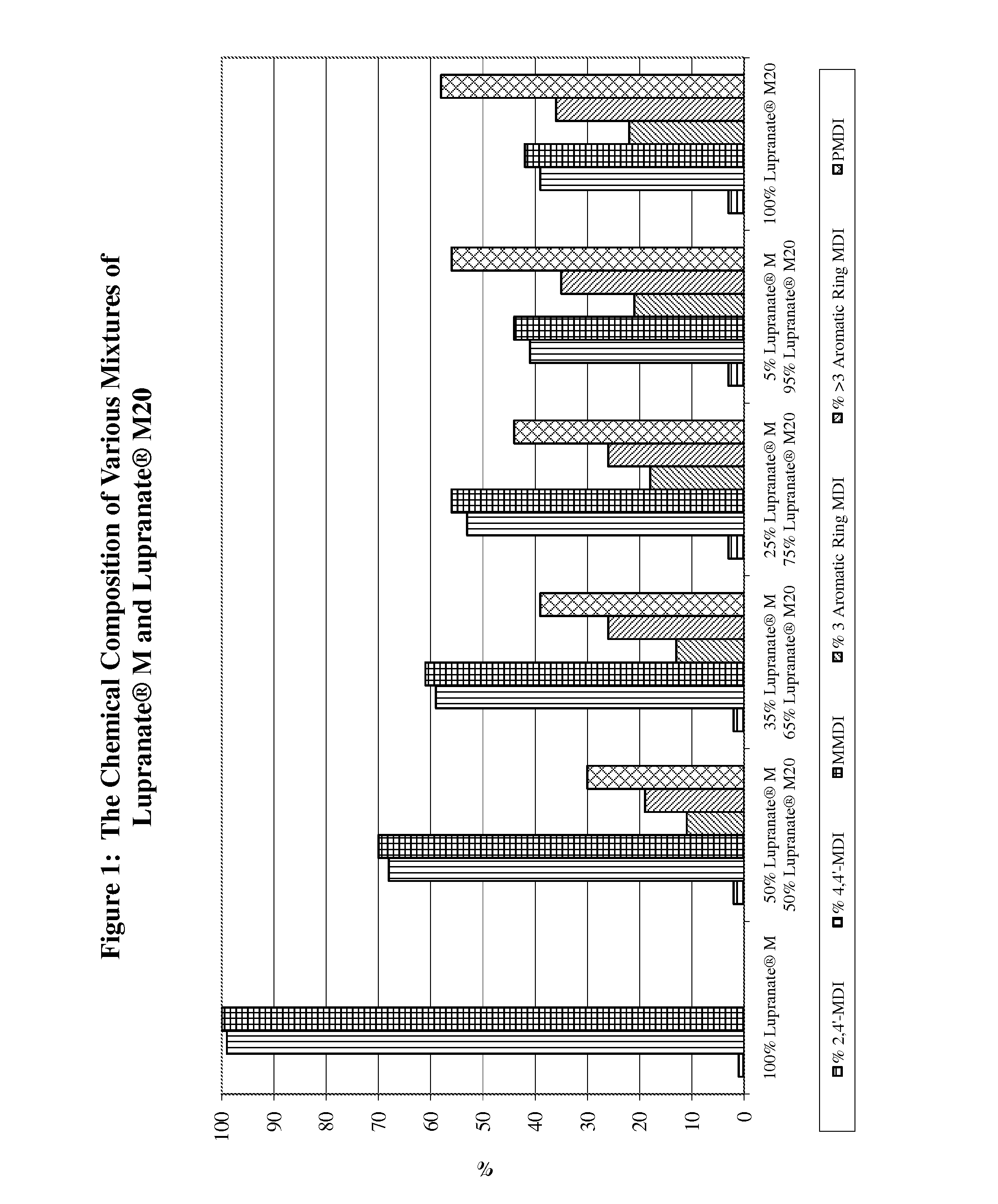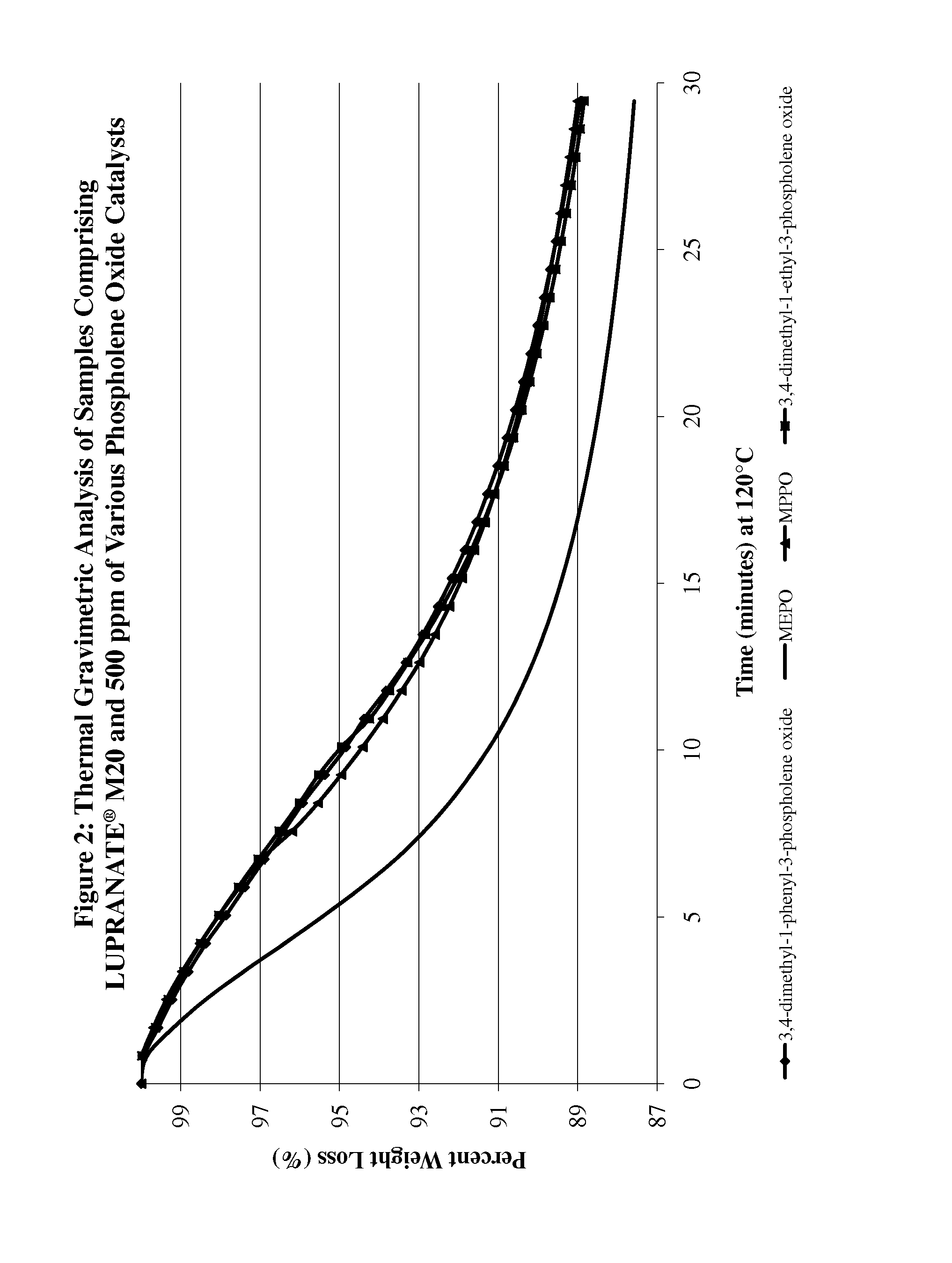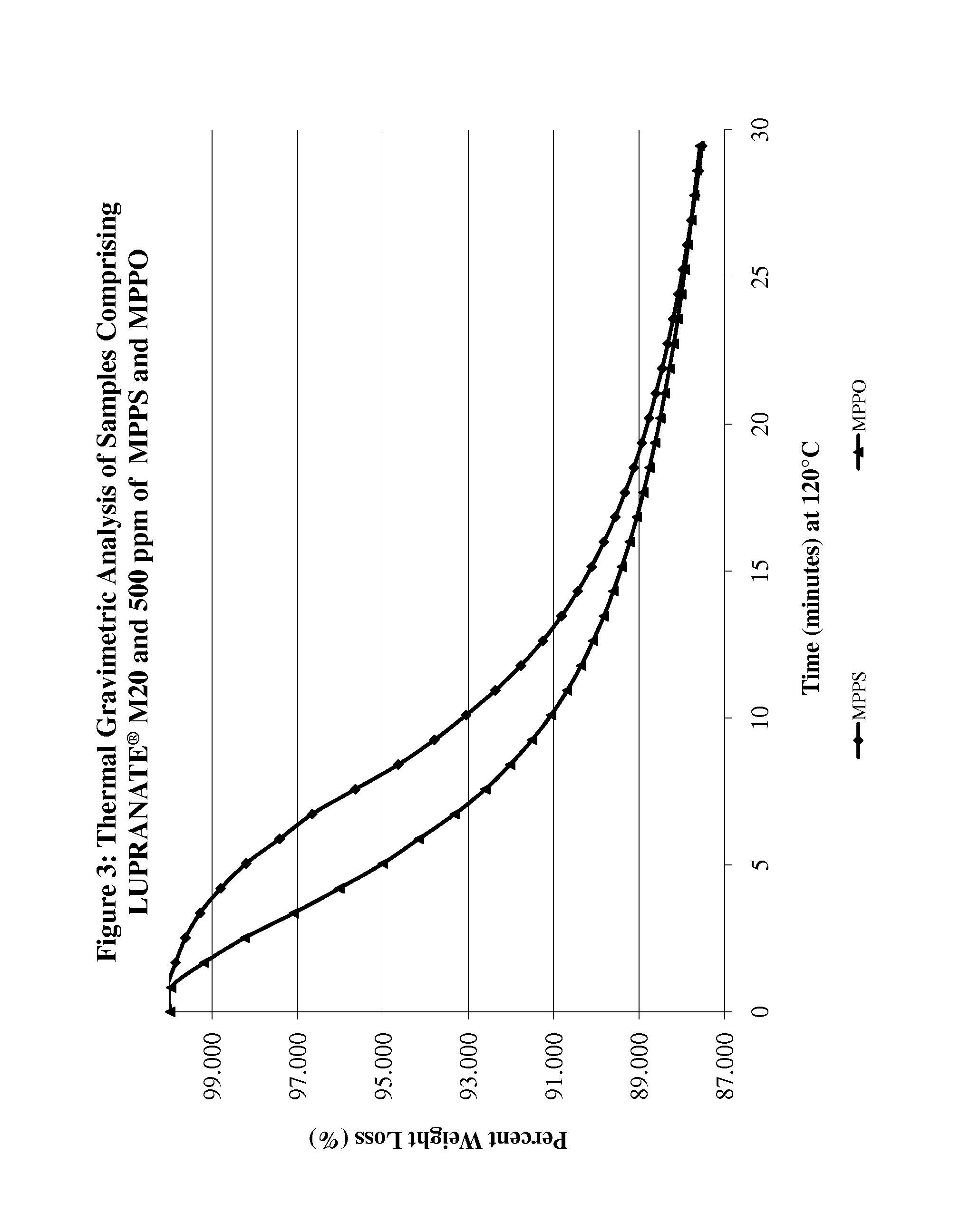proppant
- Summary
- Abstract
- Description
- Claims
- Application Information
AI Technical Summary
Benefits of technology
Problems solved by technology
Method used
Image
Examples
example 1
[0139]Example 1 is a proppant formed according to the subject invention. To form Example 1, a polycarbodiimide coating is disposed on a particle, specifically on an outer periphery of the particle. Example 1 is compared to a comparative proppant, Comparative Example 1.
[0140]The composition of Example 1 is disclosed below in Table 1. To form Example 1, Isocyanate A and Catalyst A are mixed to form a reaction mixture. The reaction mixture, as well as Particle A, are added to a reaction vessel and agitated at a temperature of 160° C. for 20 minutes to polymerize Isocyanate A. During agitation at these conditions, the polymerized Isocyanate A forms a polycarbodiimide coating on Particle A. Next, Particle A having the polycarbodiimide coating formed thereon is heated, i.e., post-cured, at a temperature of 200° C. for 45 minutes to cure the polycarbodiimide coating, whereby crystallinity and hardness are built. As such, Example 1 is a proppant that comprises Particle A and the polycarbodi...
examples 2-17
[0144]Examples 2-17 are also proppants formed according to the subject invention. Examples 2-17 are formed with the components disclosed in Table 2. Examples 2-17 are proppants comprising a polycarbodiimide coating disposed on Particle A. Particle A is activated with Adhesion Promoter A by pre-coating Particle A with Adhesion Promoter A prior to coating with the polycarbodiimide coating. If an isocyanate of a given Example comprises a mixture of isocyanates, the mixture of isocyanates is mixed thoroughly. To form Examples 2-17, the isocyanate and Catalyst A are added to a reaction vessel to form a reaction mixture and the reaction mixture is mixed and heated to 110° C. for 5 minutes. Next, Particle A is added to the reaction vessel and agitated, with the reaction mixture, at a temperature of approximately 123° C. (approximately 250° F.) for 6 minutes to (1) uniformly coat the surface of Particle A with the reaction mixture and (2) polymerize the particular isocyanate or isocyanates....
examples 18 and 19
[0151]Examples 18 and 19 are also proppants formed according to the subject invention. To form Examples 18 and 19, an isocyanate and Catalyst A are mixed to form a reaction mixture. More specifically, 140 g of the isocyanate are mixed with a quantity of Catalyst A such that 500 ppm 3-methyl-1-phenyl-2-phospholene oxide is included in the reaction mixture. The particular isocyanates and the amounts used are disclosed in Table 3. The reaction mixture is heated at 105° C. for 60 minutes and a polycarbodiimide coating is formed. The polycarbodiimide coating, in a molten state, is cooled to a solidified, thermoplastic-like, crystalline state and is powderized.
[0152]The isocyanates of Examples 18 and 19 are described below in Table 3. The amounts in Table 3 are in percent by weight based on a total combined weight of the isocyanates.
TABLE 3Example 18Example 19Isocyanate B0%65%Isocyanate C100%35%
[0153]Particle A is activated with Adhesion Promoter A by pre-coating Particle A with Adhesion ...
PUM
 Login to View More
Login to View More Abstract
Description
Claims
Application Information
 Login to View More
Login to View More - R&D
- Intellectual Property
- Life Sciences
- Materials
- Tech Scout
- Unparalleled Data Quality
- Higher Quality Content
- 60% Fewer Hallucinations
Browse by: Latest US Patents, China's latest patents, Technical Efficacy Thesaurus, Application Domain, Technology Topic, Popular Technical Reports.
© 2025 PatSnap. All rights reserved.Legal|Privacy policy|Modern Slavery Act Transparency Statement|Sitemap|About US| Contact US: help@patsnap.com



